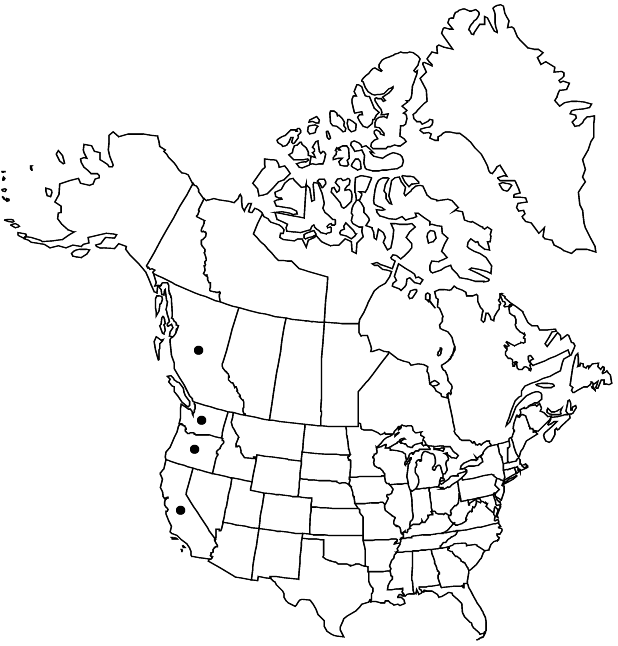Rhododendron macrophyllum
Gen. Hist. 3: 843. 1834 ,.
Shrubs or trees, to 5 m, sometimes rhizomatous. Stems: bark smooth to vertically furrowed, shredding; twigs with basally branched, crisped/matted, eglandular hairs, very quickly glabrate. Leaves persistent; petiole glabrous; blade elliptic to slightly ovate or obovate, (6–)8.5–14(–20) × 2.5–5.5(–7.5) cm, thick, coriaceous, margins entire, plane to revolute, glabrous, apex acute to obtuse or slightly acuminate, surfaces scattered eglandular-hairy (hairs branched basally, crisped, very quickly deciduous), abaxial surface ± smooth. Floral bud scales multicellular eglandular-hairy (hairs branched basally), and unicellular-hairy (hairs short to elongate) abaxially, margins eglandular-hairy (hairs branched). Inflorescences 10–20-flowered; bracts similar to bud scales. Pedicels 30–60 mm, glabrous. Flowers opening after development of leaves (of flowering shoots), erect to horizontal, fragrant; calyx lobes 1–1.5 mm, glabrous, except margins eglandular- and stipitate-glandular-hairy; corolla white to pink or rose-purple, with yellowish green spots on upper lobe, broadly campanulate, 24–48 mm, outer surface glabrous, petals connate, lobes 14–30 mm, tube gradually expanding into lobes, 10–23 mm; stamens 10, included, ± unequal, 16–37 mm. Capsules borne on erect pedicels, 13–25 × 4–7 mm, eglandular-hairy (hairs ferruginous, branched or unbranched) and, often, stipitate-glandular-hairy. Seeds without distinct tails, flattened portion of testa well developed at each end; testa expanded, dorsiventrally flattened, loose. 2n = 26.
Phenology: Flowering spring–summer.
Habitat: Forest and forest margins, thickets
Elevation: 50-1600 m
Distribution

B.C., Calif., Oreg., Wash.
Discussion
Rhododendron macrophyllum, R. maximum, and R. catawbiense represent subg. Hymenanthes (Blume) K. Koch in North America; the subgenus is represented by hundreds of species in temperate eastern Asia and is characterized by its branched, eglandular hairs (D. F. Chamberlain 1982). These showy plants are frequently used as ornamentals.
Selected References
None.